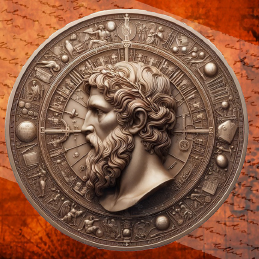More Info
How did we go from bartering to cryptocurrency? This three-lecture series presents the story of money, which zigs and zags just like humankind’s own history. Advancements in money generally parallel advancements in technology, changes in culture & beliefs, and changes in distribution of power. Put succinctly, human nature is the critical driver for the story of money. While the lecturer is an avid ancient coin collector, the lectures are not about coin collecting. You will not need any background about collecting to understand the story of money. It is a story about us.
NOTE: Norma is bringing coins that fit the geographical area and time period each lecture. In-person attendees will actually be able to handle ancient coinage!
Part 1: Barter and the First Monies (9000BC–500AD)
This first lecture in the story of money covers barter, the first non-coin “money,” the first coins (Lydia and the Greek city states), Athenian and Alexandrian coinage (the first “international” monies), and Roman coins as communication, and ultimately, their connection with the downfall of the Roman Empire.
Objects for you to see and touch: Greek gold and silver, including the world’s first coins, Athenian & Alexandrian coins, Roman Republic and Imperial coins, and more.
Norma Fries, a long-time Instituter, is often asked how she got into collecting coins and currency. She responds that her interest grew from watching her Dad collect coins—he seemed to be having such a grand time! After getting a degree in mathematics, teaching high school math for 5 years, and working for IBM in software development for almost 30 years, she finally had time to study history and the monies affiliated with that history. As anyone around her knows, she spends huge amounts of time on this passion and is so happy to share what she has collected and discovered.
